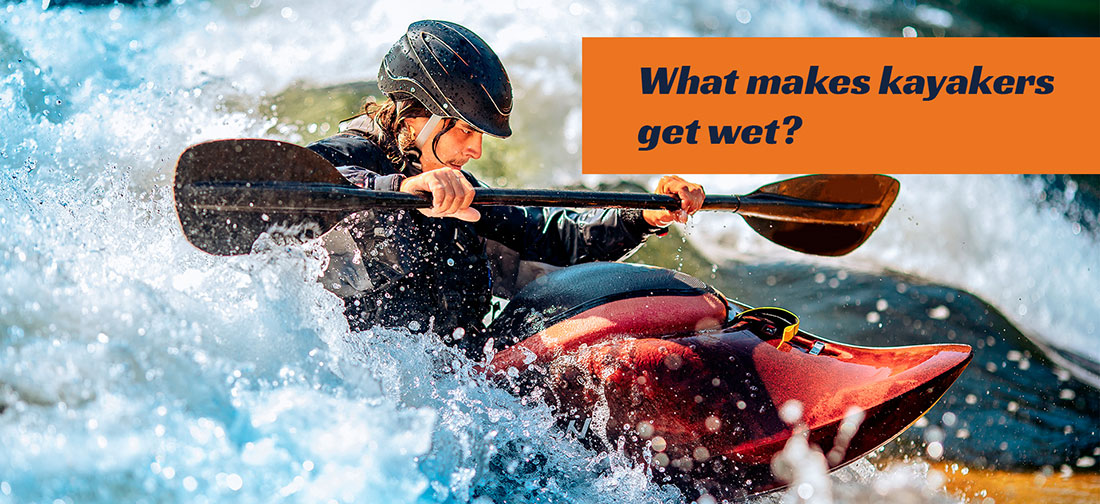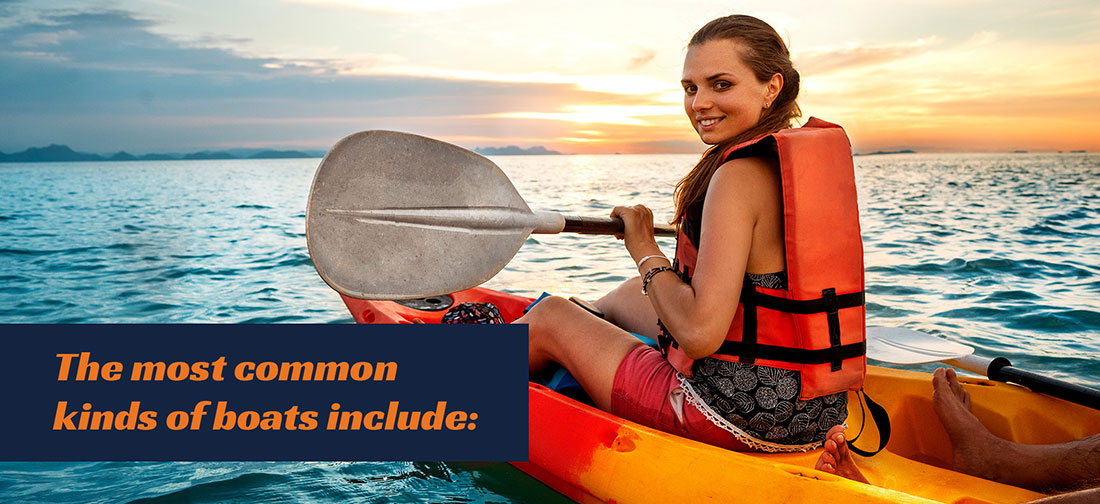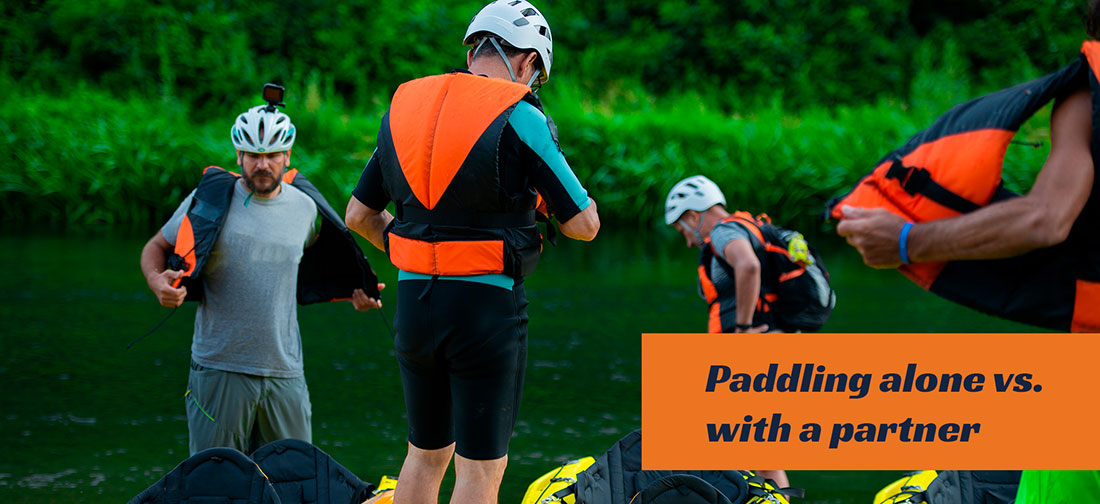Do you always get wet when kayaking?
When you think of kayaking in Vegas, you envision boating on the water, not in it! Unless you’re swimming or practicing rolls or stunts, the goal when you go out kayaking is usually to stay above water. If you hope to stay dry, rest assured you can go out on the water without returning soaking wet. Here are some tips to stay dry if you don’t intend to end up in the water.
Think about where you’re going.
The location might not sound like a major factor, but it makes a big difference in how likely it is that you’ll get wet. If you are out paddling on a calm body of water like a small pond or stream, it’s much less likely that you’ll get wet compared to kayaking down a raging river or paddling through ocean waves.
What makes kayakers get wet?
For those who want to stay dry when they are kayaking, it’s essential to know the most likely causes of getting wet to avoid them. Water splashing into the boat is the most common cause of getting splashed when kayaking. There are a few reasons why water splash makes kayakers wet. One is wave height. The higher the waves you’re paddling through, the more likely you will get wet. If you are exposed to more giant waves regularly as you paddle or by sudden large waves caused by wind or other boaters, the chances are greater that a wave or multiple waves will crash over the boat. Paddles and paddling techniques are other factors, and the proper paddling technique is one way to alleviate that problem.

Kayaking Technique
Your kayaking technique during your kayaking tours in Vegas can also determine how likely you will get wet. There are ways to paddle your boat without getting wet while on the Colorado River or another body of water. Entering the kayak from the shore instead of the water reduces your chances of getting wet. Your arms and torso are more likely to get drenched from paddling, while entering the boat from water can get your legs and feet wet. In addition to simply being unpleasant, getting wet can translate to being cold if the air or water temperatures are low when you start or while you’re out. Any wind you encounter can also make you colder if wet.
Choose the correct boat.
There are a few different kinds of boats that you can use when you’re kayaking in Vegas. Before embarking on a kayaking tour, there are a few factors to consider when choosing the right kind of boat. Your paddling experience, personal preference, the body of water you’ll be boating in, and the type of kayak you use also determine how wet you are likely to get.
The most common kinds of boats include:
- Sit-in
- Sit-on-top

These categories of boats are mainly self-explanatory. A sit-in kayak is one in which you sit low in the boat, close to water level, with most of the boat surrounding your body. While there are numerous factors to consider when you’re wondering which type of boat is best for your Vegas kayak tour, you are less likely to get wet just from paddling alone if you choose a sit-in-style kayak.
Unlike a sit-in style kayak, you will sit much higher above the water with a sit-on-top kayak. While it may sound like you won’t get as wet if you’re further from the water’s surface, that’s not the case! With a sit-on-top kayak, you are more exposed to the air and water, which means you’re more likely to get wet from kayaking than sitting in an enclosed boat. Remember that paddling technique and the type of paddle you use also affect how likely you are to get wet, but the chances are typically higher with a sit-on-top kayak.
Paddle Shape and Design
Just as the boat that you use, the type of paddle you choose for your Vegas kayak tour influences how wet you may get. Paddles come in several shapes and lengths. Performance paddles have grooves along the side that give them added grip. While the grooves make it easier to grip the paddle, they also make it easier for water to enter the boat. Performance paddles also tend to have a concave design. That makes them more efficient with each stroke, but it also makes them more likely to pick up water. If performance is not a factor on your Las Vegas kayak adventure, you may choose a paddle designed for recreational use instead. Recreational paddles have a flat and smooth surface.
How to keep water from running down your paddle
For those partaking in recreational kayaking tours in Vegas, comfort is the primary goal of the kayaking adventure rather than performance or time. If you are not a competitive kayaker, you might want to modify your paddle to keep water from dripping down the sides and making you wet. There are some small pieces of equipment that you can add to your paddle to keep water from running down your arms and getting into your boat.
One of the most common attachments is a drip ring. A drip ring is a rubber attachment that fits over the paddle’s shaft. Some newer paddles on the market already have drip rings built in, but you can also add the rings to older paddles. Drip rings divert water to run down the paddle and back onto the body of water you’re paddling on rather than running down your arms. Even if you use or have a drip ring on your paddle, it’s essential to use it properly to keep it from getting wet. The drip rings should be placed at the end of the paddle so they are still above the waterline to work most effectively.
How you paddle makes a difference.
In addition to the type of paddle you use, the way you hold your paddle can influence how likely you’ll get wet when you are kayaking. Due to gravity, water runs down when it gets onto your paddle. Depending on how you use your paddle, the water can either drain down onto your arm or back out onto the water. Holding the paddle horizontally or tilted away from your body can keep the water from running down your hand and onto your arm or sleeve. Using gentle rather than vigorous paddling strokes can also keep you from getting wet.
Paddling alone vs. with a partner
Whether you paddle alone or with another person can also affect your chances of getting wet. In addition to choosing between a sit-in and sit-on-top kayak, you can also decide whether to get a solo or a tandem kayak. Paddling with a partner if you’re the person in the back also means it’s more likely that you’ll get wet.

If you’re ready to sign up for kayaking tours in Vegas but you’re not ready to get drenched, Blazin’ Paddles can help! Contact us today for more details and information.
